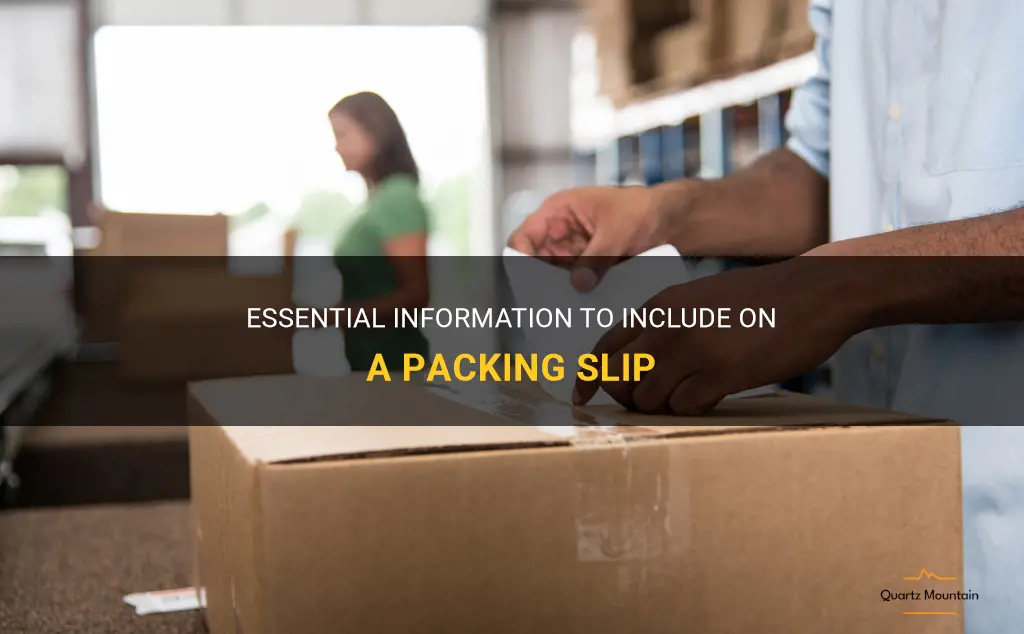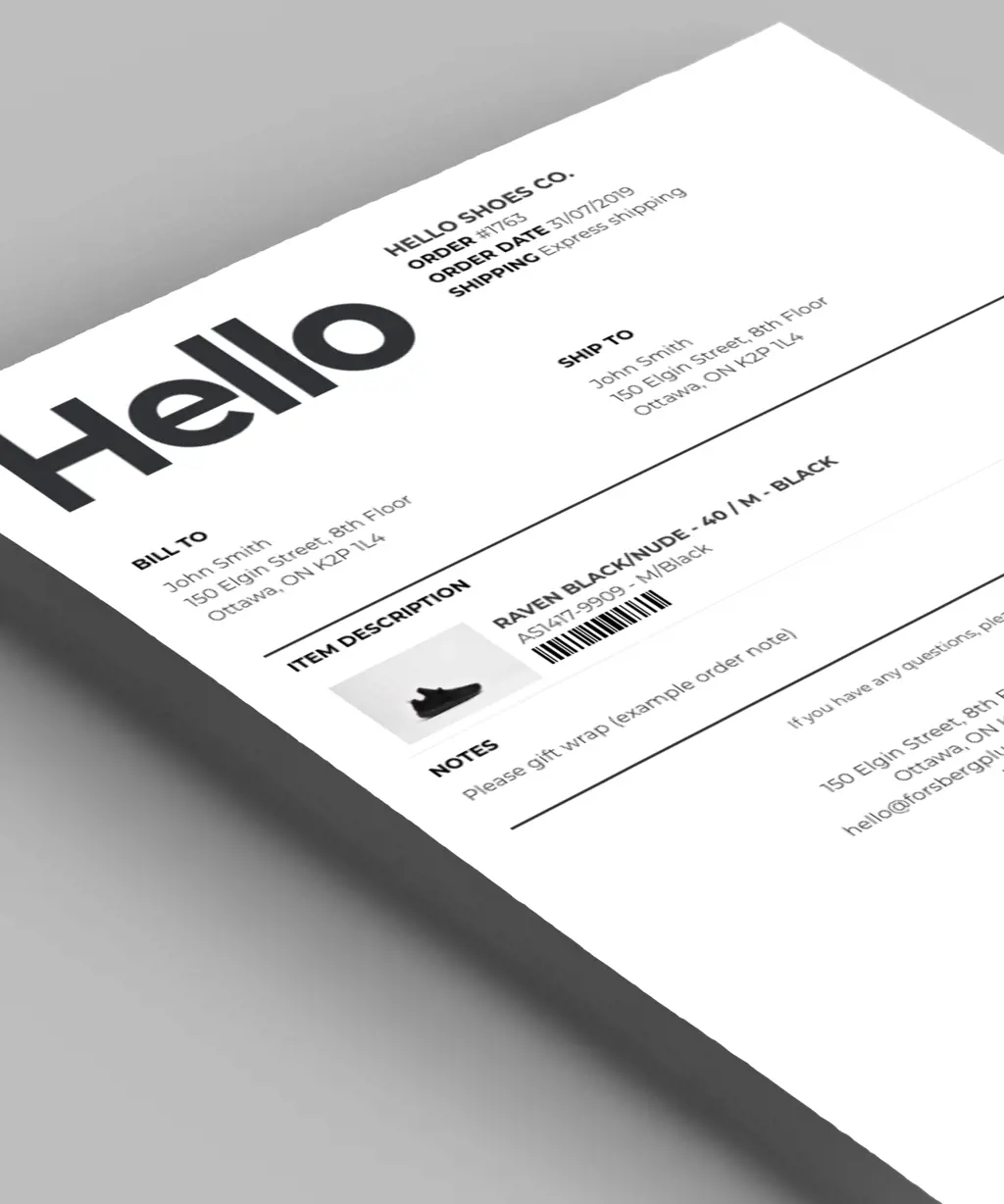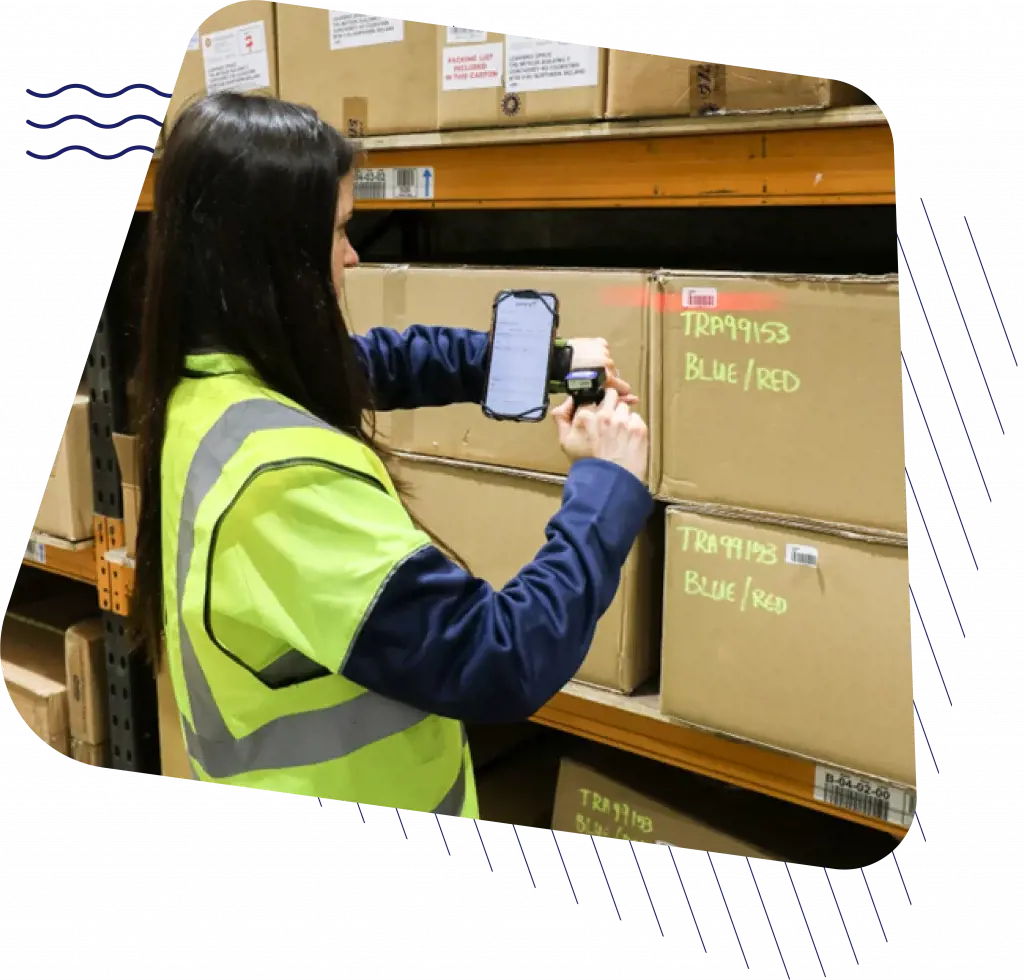
When it comes to shipping products to customers, a packing slip is an essential document that includes important information about the contents of a package. This informative piece of paper serves as a guide for both the sender and the recipient, ensuring that all necessary items are included and accounted for. However, what exactly should be included on a packing slip? In this article, we will explore the essential information that should be included on a packing slip to ensure a smooth and efficient shipping process. Whether you are a small business owner or a frequent online shopper, understanding the importance of a comprehensive packing slip is key to a successful delivery.
What You'll Learn
- What are the essential details that should be included on a packing slip?
- How should items be listed and organized on a packing slip?
- Should package dimensions and weight be included on a packing slip?
- How can I ensure accuracy when filling out a packing slip?
- Are there any additional items or information that should be included on a packing slip for specific industries or types of products?

What are the essential details that should be included on a packing slip?

A packing slip is an important document that accompanies a shipment and provides recipients with important information about the contents of the package. It serves as a record of the items that are being shipped and can help to ensure that the recipient receives the correct items and quantities. When preparing a packing slip, there are several essential details that should be included to ensure accuracy and facilitate the shipping and receiving process.
Sender and recipient information:
The packing slip should include the name, address, and contact information of both the sender (your company) and the recipient. This information is crucial for ensuring that the package is delivered to the correct location. Including a phone number or email address for both parties can also be helpful in case there are any questions or issues with the shipment.
Order information:
The packing slip should clearly state the order number, date, and any other relevant order information. This helps to ensure that the recipient can easily identify the order and match it up with their records. Including the date of the order can also be helpful for tracking purposes.
Item details:
For each item included in the shipment, the packing slip should provide a detailed description. This should include the name of the item, the quantity being shipped, and any other relevant information such as color, size, or SKU number. Providing accurate and detailed descriptions can help to prevent confusion and ensure that the recipient receives the correct items.
Pricing and payment information:
If applicable, the packing slip should include pricing and payment information. This could include the cost of each item, any discounts applied, and the total amount due. This information can be helpful for both the sender and the recipient in case there are any discrepancies or questions about the payment.
Special instructions or notes:
If there are any special instructions or notes regarding the shipment, they should be clearly stated on the packing slip. This could include information about special handling requirements, delivery instructions, or any other relevant information that the recipient should be aware of.
Return instructions:
In case the recipient needs to return the items, the packing slip should include clear instructions on how to do so. This could include information about the return process, any applicable fees or requirements, and contact information for customer service or the returns department.
By including these essential details on a packing slip, you can help to ensure that your shipments are accurate, efficient, and easy to process. Taking the time to properly prepare a packing slip can save both you and your customers time and effort in the long run, and can help to prevent errors and confusion during the shipping and receiving process.
Essential Packing Tips for an Unforgettable Gorilla Trekking Experience in Uganda
You may want to see also

How should items be listed and organized on a packing slip?

When it comes to listing and organizing items on a packing slip, it is important to consider factors such as the types of items being shipped, the size and weight of the items, and any specific requirements or preferences of the recipient. By following a few key guidelines, you can ensure that your packing slip is organized and easy to understand for both the sender and the recipient. In this article, we will explore the best practices for listing and organizing items on a packing slip.
Use a clear and concise format:
To make the packing slip easy to read and understand, it is important to use a clear and concise format. Start by including the date of shipment, the sender's contact information, and the recipient's contact information at the top of the slip. Then, create a table or list format to itemize the products being shipped, including their descriptions, quantities, and any special notes or instructions.
Categorize items:
If you are shipping a large number of different items, it can be helpful to categorize them on the packing slip. This will make it easier for the recipient to locate specific items when unpacking. For example, you could group items by type (e.g., electronics, clothing, accessories) or by room (e.g., kitchen, bathroom, bedroom). Use clear headings or subheadings to distinguish between different categories.
Include item details:
When listing items on the packing slip, be sure to include all relevant details about each item. This may include the item name, SKU or part number, description, color, size, and any other important information. Providing detailed information will help the recipient verify that the correct items have been received and will make it easier for them to sort and organize the items upon delivery.
Use item codes or barcodes:
If you are shipping a large volume of items, it may be helpful to use item codes or barcodes on the packing slip. This will streamline the process of inputting the items into the recipient's inventory system and minimize the chances of errors or confusion. Include the item codes or barcodes next to each item on the packing slip, and provide a separate reference sheet if necessary.
Prioritize items by importance or fragility:
If certain items are more important or fragile than others, it is a good idea to prioritize them on the packing slip. This will ensure that they receive special attention during the shipping and handling process. For example, you could use bold or highlighted text to draw attention to important or fragile items, or include additional instructions or warnings next to these items.
Provide packaging instructions:
In addition to listing the items being shipped, it may be helpful to include packaging instructions on the packing slip. This will provide guidance to the recipient on how to handle and unpack the items safely. For example, you could recommend specific tools or techniques for unpacking fragile items, or provide instructions on how to dispose of packaging materials properly.
In conclusion, organizing and listing items on a packing slip requires attention to detail and consideration of the recipient's needs. By following the guidelines provided above, you can create a well-organized packing slip that ensures the smooth delivery and handling of your shipped items. Remember to use a clear and concise format, categorize items if necessary, include detailed item information, use item codes or barcodes if applicable, prioritize important or fragile items, and provide packaging instructions to enhance the recipient's experience.
The Essential Packing List for a Colorado Ski Trip
You may want to see also

Should package dimensions and weight be included on a packing slip?
When preparing a package for shipment, it is important to include accurate and detailed information on the packing slip. This includes not only the contents of the package, but also the dimensions and weight of the package itself. Including this information on the packing slip can provide several benefits and help ensure a smooth and efficient shipping process.
Firstly, including package dimensions and weight on the packing slip helps to accurately estimate shipping costs. Shipping carriers often charge based on the size and weight of the package, so having this information readily available can help both the shipper and the recipient understand what to expect in terms of shipping fees. This can also help avoid any surprises or disputes regarding shipping costs later on.
Furthermore, including package dimensions and weight on the packing slip can help prevent damage during transit. When shipping large, bulky or heavy items, it is important to select the right packaging materials and methods to ensure the item is securely protected. Knowing the dimensions and weight of the package can help the shipper choose the appropriate packaging materials and methods, such as selecting a sturdy box, using sufficient padding and reinforcement, or adding warning labels for fragile items. This can minimize the risk of damage during transportation.
In addition, including package dimensions and weight on the packing slip can streamline the shipping process. When packages arrive at shipping facilities, they are often sorted and organized based on their size and weight. Having this information clearly indicated on the packing slip can help shipping personnel quickly identify and handle the package appropriately. This can help reduce processing time, improve efficiency, and ultimately expedite the delivery of the package to its intended destination.
Including package dimensions and weight on the packing slip is also important for compliance and regulatory purposes. Certain items may have specific size or weight restrictions when it comes to shipping, and including this information on the packing slip can help ensure compliance with these regulations. This is particularly important for international shipments, where customs and border control may have strict rules regarding package size and weight.
Overall, including package dimensions and weight on the packing slip is highly recommended. It not only helps estimate shipping costs accurately, but also ensures proper packaging, streamlines the shipping process, and ensures compliance with regulations. By including this information on the packing slip, shippers can help make the shipping process more efficient and convenient for all parties involved.
The Ultimate Packing Guide for a Trip to Oaxaca
You may want to see also

How can I ensure accuracy when filling out a packing slip?

Filling out a packing slip accurately is crucial to ensure that the right items are being shipped and that all necessary information is included for smooth delivery and customer satisfaction. Here are some steps and tips to help you ensure accuracy when filling out a packing slip.
- Double-check the order details: Before you start filling out the packing slip, review the order details to ensure you have the correct information. Check the item names, quantities, and any special instructions provided by the customer.
- Use a standardized format: Using a standardized format for your packing slips can simplify the process and reduce the chances of errors. Include fields for important information such as order number, customer name and address, item descriptions, quantities, and any additional notes or comments.
- Be meticulous with item descriptions: When describing the items on the packing slip, be as detailed and specific as possible. Include item names, sizes, colors, or any other relevant information that will help the recipient identify the product accurately.
- Check inventory levels: Before packaging the items, verify that you have the correct quantities available in your inventory. It's essential to have accurate inventory management to avoid shipping incorrect quantities or running out of stock.
- Use barcode scanning technology: Utilizing barcode scanning technology can significantly reduce human error when filling out packing slips. By scanning the barcodes on the items and comparing them to the order details, you can ensure that the right products are being packed.
- Conduct a final review: After you have filled out the packing slip, take a moment to review it one final time. Check for any typos, incorrect information, or missing details. A small mistake on a packing slip can cause significant delays or confusion during the shipping process.
- Include return/exchange instructions: If your product allows for returns or exchanges, include clear instructions on the packing slip. This will help the recipient understand the process and avoid any confusion or frustration if they need to return or exchange the item.
- Use a quality control process: Implementing a quality control process can help minimize errors when filling out packing slips. Have a team member double-check the accuracy of the information on the packing slip before the items are shipped. This serves as an additional layer of verification to ensure accuracy.
- Keep records and follow up: It's important to keep records of all the packing slips you fill out. This will allow you to track orders, troubleshoot any discrepancies, and provide evidence of shipment if needed. Following up with customers after the items have been delivered can also help identify any potential issues and address them promptly.
By following these steps and tips, you can ensure accuracy when filling out a packing slip. Accuracy in the process will not only lead to customer satisfaction but also streamline your shipping operations and minimize any potential errors or delays.
The Essential Gear: What to Pack for Hiking the Ridgeline
You may want to see also

Are there any additional items or information that should be included on a packing slip for specific industries or types of products?

When it comes to creating a packing slip for specific industries or types of products, there are certain additional items or information that should be included to ensure a smooth and efficient shipping process. These additional items or information may vary depending on the industry or the type of product being shipped. In this article, we will discuss some common examples of specific industries and their corresponding packing slip requirements.
Electronics Industry:
In the electronics industry, it is important to include the serial numbers or model numbers of the products on the packing slip. This helps in easy identification and tracking of the products throughout the shipping process. Additionally, it may be beneficial to include any technical specifications or user manuals that are relevant to the product being shipped. This information ensures that the customer receives all the necessary documentation and support for the product.
Food Industry:
When shipping food products, it is vital to include information related to perishability and handling instructions. This includes stating the storage temperature requirements, expiry dates, and any specific handling precautions that need to be taken. In the case of frozen or refrigerated items, it is important to indicate if the products require special packaging or cooling methods to maintain their freshness during transit.
Pharmaceutical Industry:
The pharmaceutical industry has strict regulations and requirements when it comes to shipping medications or healthcare products. In addition to the standard shipping information, packing slips in the pharmaceutical industry should include the lot numbers, expiration dates, and the National Drug Code (NDC) for each product. These details are necessary for traceability and compliance with regulatory agencies.
Fashion Industry:
In the fashion industry, including specific item details on the packing slip is crucial for accurate order fulfillment. This can include the size, color, style, and SKU (Stock Keeping Unit) for each item. Including images or product codes can also help in avoiding any confusion or mistakes during the picking and packing process.
Fragile or High-value Items:
For fragile or high-value items, it is important to provide additional information on the packing slip to ensure proper handling during transit. This can include special handling instructions such as "Fragile, Handle with Care" or "This Side Up". Including insurance information or declaring the value of the items being shipped can also help in case of any damage or loss during transportation.
In conclusion, packing slips should be tailored to specific industries or types of products to provide the necessary information for smooth and successful shipping. Including additional items or information, such as serial numbers, technical specifications, handling instructions, lot numbers, and product details, can greatly enhance the efficiency and reliability of the shipping process. By considering the unique requirements of each industry or product type, businesses can ensure customer satisfaction and reduce the likelihood of errors or mishandling during shipping.
Essential Items to Pack for a Memorable Rodeo Experience
You may want to see also
Frequently asked questions
A packing slip should include the following information: the customer's name and shipping address, the order number, a description of each item being shipped (including quantity), any special instructions for handling or delivery, and the total cost of the order.
Including prices on the packing slip is optional. Some companies choose to include prices for their customers' reference or for customs purposes, while others prefer to keep this information confidential. If you choose to include prices, be sure to consider the privacy preferences of your customers and any legal requirements for disclosing this information.
Including a return or exchange policy on the packing slip is not required, but it can be helpful for customers who may need to return or exchange their order. By clearly stating your policies, you can save customers time and frustration by providing them with the necessary information upfront. Including contact information for your customer service team can also be beneficial in facilitating returns or exchanges.







